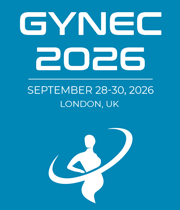Title : Ruptured tubal ectopic pregnancy with intraoperative detection of pulsatile fetal cardiac activity: A rare presentation of intraoperative visualization of cardiac activity in ectopic pregnancy
Abstract:
Background: Ectopic pregnancies account for approximately 2% of reported pregnancies (ACOG PB 193). Diagnosis relies on ultrasound imaging and trends of beta human chorionic gonadotropin levels. We present, to our knowledge, one of the first case reports of a ruptured tubal ectopic pregnancy in which fetal cardiac pulsation was observed intraoperatively, highlighting a rare intraoperative finding associated with ectopic pregnancy.
Case presentation: A 32-year-old gravida 5 para 4 presented with vaginal bleeding and left-sided pelvic pain. Transvaginal ultrasound demonstrated a 6-week, 4-day gestational sac with an embryonic pole and fetal heart rate of 194 beats per minute in the left adnexa, with no intrauterine pregnancy. Serial serum β-hCG values were 17,694 IU/L and 16,599 IU/L 48 hours later. Diagnostic laparoscopy revealed a ruptured left tubal ectopic pregnancy with approximately 50 mL of hemoperitoneum. Remarkably, fetal cardiac pulsation was visible within the ectopic tissue. A left salpingectomy was performed to remove the ectopic tissue. Histopathology confirmed immature chorionic villi, nucleated red blood cells, and decidualized tubal tissue, consistent with ectopic pregnancy in the fallopian tube.
Discussion: This case describes the rare finding of intraoperative visualization of cardiac activity in the setting of a ruptured tubal ectopic pregnancy. While ectopic pregnancies account for 1-2% of all pregnancies, and are themselves inherently common, visible cardiac pulsation within ectopic tissue is highly unusual and we believe this to be one of the first reports of this intraoperative finding.
In this case, the presence of pulsatile cardiac activity within the ectopic tissue, demonstrating viability, introduces a new emotional and ethical dimension to surgical management. In usual circumstances, with the laparoscopic removal of ectopic tissue in the setting of rupture, nonviable tissue is being removed from a nonviable location. However, in the case of our patient, we are now faced with the reality of excising demonstrably viable tissue from a nonviable location. This emphasizes the nature of surgical management of ectopic pregnancies: discontinuation of embryonic development due to the direct threat it poses on maternal life, especially in the setting of rupture.
The intraoperative visualization of pulsatile cardiac activity did not alter the surgical management, as a left salpingectomy was completed to control hemorrhage in our ruptured
patient. However, this case raises a thought-provoking ethical and emotional consideration: should the intraoperative visualization of cardiac activity, indicating a viable embryo, alter the ethical or emotional dimension of management by the surgical team? While it is currently not a medical standard to relocate an ectopic embryo to a viable uterine location, the observation of embryonic cardiac motion in a life-threatening context underscores the complexity of ectopic pregnancy management.
Conclusion: Fetal cardiac activity within an ectopic pregnancy is observed on ultrasound imaging. However, fetal cardiac activity observed within the ectopic tissue at the time of surgical exploration is exceedingly rare. To our knowledge, this is the first case report describing a direct visualization of fetal cardiac pulsation on laparoscopy and the persistence of such pulsatile fetal cardiac activity despite a tubal rupture and hemoperitoneum.




